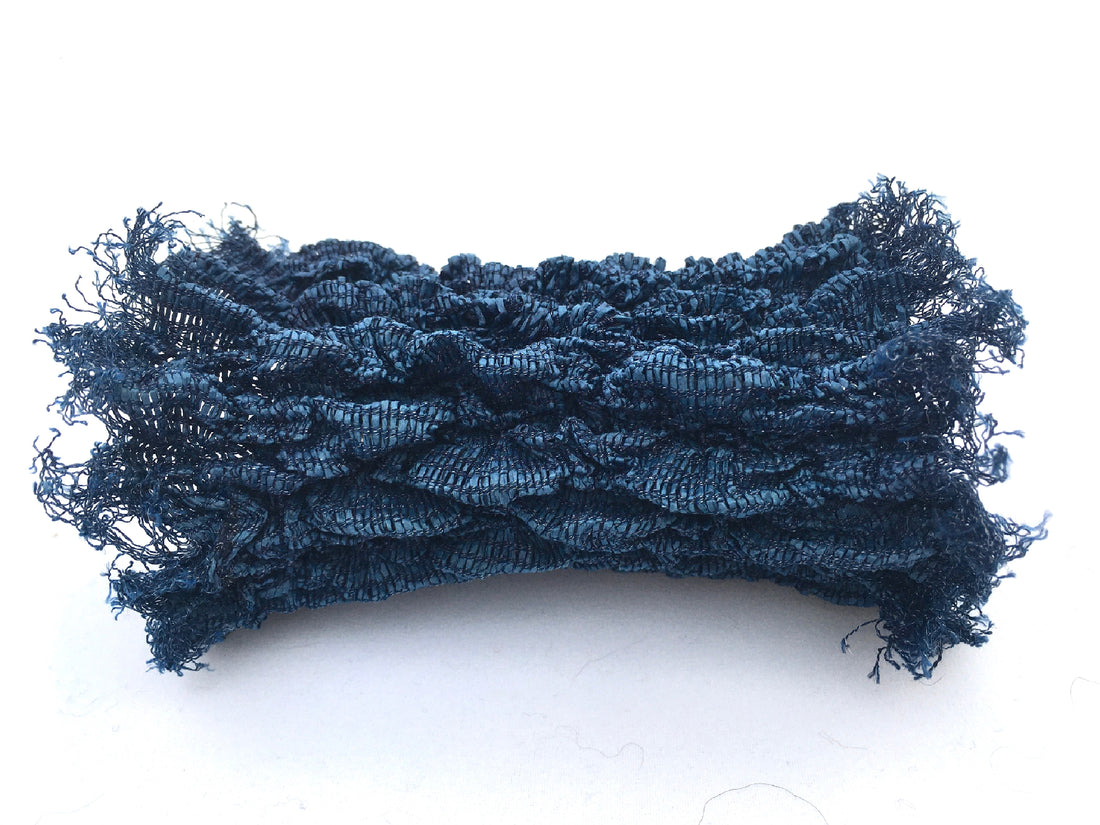
Kendall Clarke: a passion for paper
The process of weaving is known to be slow and often painstaking, so it might seem an unusual choice to make your own materials from scratch before you even begin. But, for artist Kendall Clarke, to be able to create her own weaving yarn from Japanese paper is a privilege and a pleasure. Kendall shares Dorothea Rockburne’s view that ‘a piece of paper is a metaphysical object’, a special material that is closely linked to spirituality, culture and experience. In Japan, washi paper has been used for nearly 1500 years in numerous aspects of religious and daily life, from scrolls to lanterns to clothes to houses. The tradition of making textiles from paper continues to this day. So, when she was recently awarded the prestigious QEST Sanderson Design Company scholarship, Kendall chose to travel to Japan to take a deep dive into her love of all things paper.
 Image: Kendall Clarke. Reductive. Photograph by Peer Lindgreen. Image above: Kendall Clarke. Formation.
Image: Kendall Clarke. Reductive. Photograph by Peer Lindgreen. Image above: Kendall Clarke. Formation.
Her work is known for exploring the history and culture of paper and writing as well as of paper textiles, and her long-held dream had been to travel to the source to study ancient and traditional techniques for making her own materials. Thanks to the QEST scholarship, she was able to work with expert paper spinner and shifu weaver Hiroko Karuno over an extended period in her Kyoto home and studio. As well as refining her spinning and weaving skills, she also began to build a network of contacts in the world of handmade paper textiles, from papermakers in mountain villages to contemporary museums and galleries to independent obi and kimono weavers and local craft centres teaching traditional textile workshops.
 Image: Kendall Clarke, Caterwise.
Image: Kendall Clarke, Caterwise.
Kendall’s head was spinning with possibilities when she arrived back at her studio in London. So she was thrilled when she won a Theo Moorman Trust award to fund her research into extending the uses of her unique materials. She begins with sheets of Kozo paper, handmade by a fourth-generation papermaker and selected for its suitability for textiles, which she cuts and rolls precisely by hand. She then spins the fine, but strong, thread using a traditional Japanese spinning wheel. She has also sourced antique notebooks from Japan’s pre-modern periods, but she hasn’t yet had the courage to cut them up for thread.
With the support of Sanderson Design Company, Kendall is investigating the potential of paper textiles in interiors and architecture, while also offering workshops and working on her own woven art textiles, which remains the core of her practice.
 Image: Kendall Clarke, Spinning the paper thread, Kyoto.
Image: Kendall Clarke, Spinning the paper thread, Kyoto.
Her work can be seen in Stillness at Gallery 57 Contemporary Art, Arundel until 6 July, in Paperwork at Hub, Sleaford (National Centre for Craft and Design) from 20 July-17 November and at Cockpit Bloomsbury Open Studios from 13-16 June.
Find out more:

Her work is known for exploring the history and culture of paper and writing as well as of paper textiles, and her long-held dream had been to travel to the source to study ancient and traditional techniques for making her own materials. Thanks to the QEST scholarship, she was able to work with expert paper spinner and shifu weaver Hiroko Karuno over an extended period in her Kyoto home and studio. As well as refining her spinning and weaving skills, she also began to build a network of contacts in the world of handmade paper textiles, from papermakers in mountain villages to contemporary museums and galleries to independent obi and kimono weavers and local craft centres teaching traditional textile workshops.

Kendall’s head was spinning with possibilities when she arrived back at her studio in London. So she was thrilled when she won a Theo Moorman Trust award to fund her research into extending the uses of her unique materials. She begins with sheets of Kozo paper, handmade by a fourth-generation papermaker and selected for its suitability for textiles, which she cuts and rolls precisely by hand. She then spins the fine, but strong, thread using a traditional Japanese spinning wheel. She has also sourced antique notebooks from Japan’s pre-modern periods, but she hasn’t yet had the courage to cut them up for thread.
With the support of Sanderson Design Company, Kendall is investigating the potential of paper textiles in interiors and architecture, while also offering workshops and working on her own woven art textiles, which remains the core of her practice.

Her work can be seen in Stillness at Gallery 57 Contemporary Art, Arundel until 6 July, in Paperwork at Hub, Sleaford (National Centre for Craft and Design) from 20 July-17 November and at Cockpit Bloomsbury Open Studios from 13-16 June.
Find out more:
